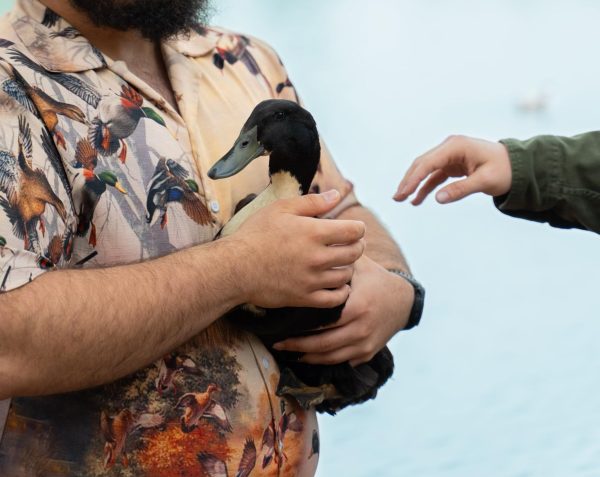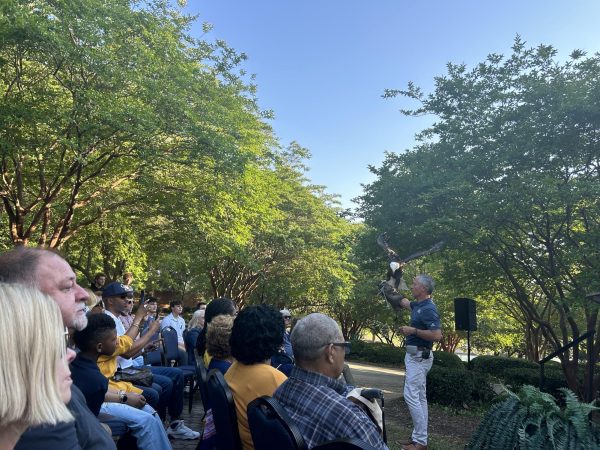Solar Eclipse at Southern: Free eclipse glasses, viewing times and safety tips
August 21, 2017
After a 99 year countdown the day of “The Great American Eclipse” is finally here. The solar eclipse will pass from the Northwest ending in the Southeast at Charleston, South Carolina.
Although Georgia Southern University will not have a total eclipse, the sun’s rays will be blocked 97 percent according to Dillon Marcy, GS Physics Department. Leading to darkened skies, a partially covered sun and an unforgettable experience.
Free Eclipse Glasses
GS Auxiliary Services will be giving away free eclipse glasses in front of the dining commons from 1 p.m.- 3 p.m. while supplies last.
“Viewing glasses are intended for students but, faculty and staff can get them as well,” said Katie Miller, marketing manager Auxiliary Services. Students will be asked for their Eagle ID to receive free eclipse glasses.
NASA advises all viewers to wear reputable eclipse glasses (as seen above) and avoid using homemade filters or ordinary sunglasses. For more information about eclipse glasses and alternative viewing methods click here.
Viewing Times
According to the U.S. Naval Observatory’s online eclipse computer, the eclipse in Statesboro, Georgia will roughly follow the schedule below:
Eclipse Begins-1:13 p.m.
Maximum Eclipse-2:44 p.m.
Eclipse Ends-4:00p.m.
An eclipse map can be viewed here.
Camera Safety
Many may want to capture the experience in a picture. NASA advises viewers to not look at the sun through a camera, a telescope, binoculars, or any other optical device while using your eclipse glasses or hand-held solar viewer — the concentrated solar rays will damage the filter and enter your eye(s), causing serious injury.
Solar Filters can be purchased and place in front of the camera to avoid lens and eye damage.
When the sun returns
After looking at the sun, NASA advises everyone turn away and remove your filter and to not remove them while looking at the sun. The next total solar eclipse will be on April 8, 2024 visible from Texas to Maine.
Be sure to share your experience with The George-Anne by tweeting your pictures to us here using the #eclipseatsouthern or share your eclipse story with our snapchat: thegeorgeanne.
Brett Daniel contributed to this report.














